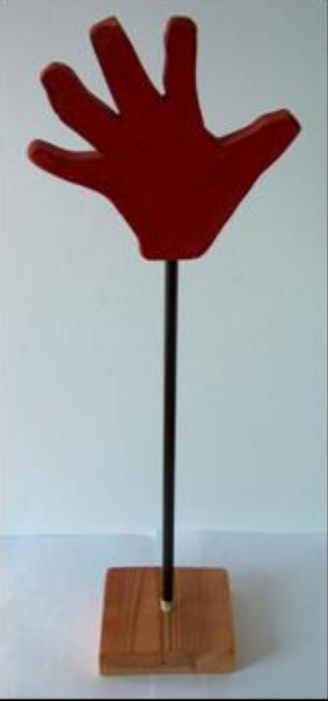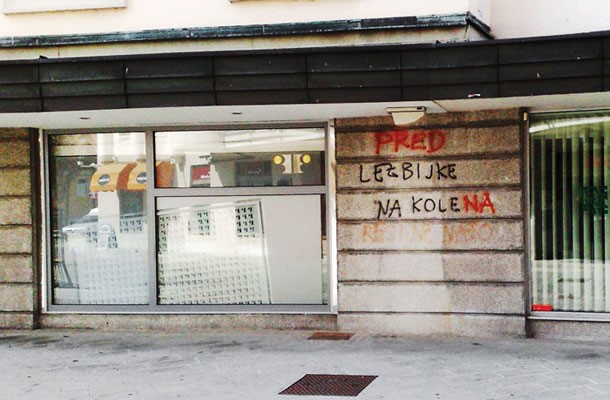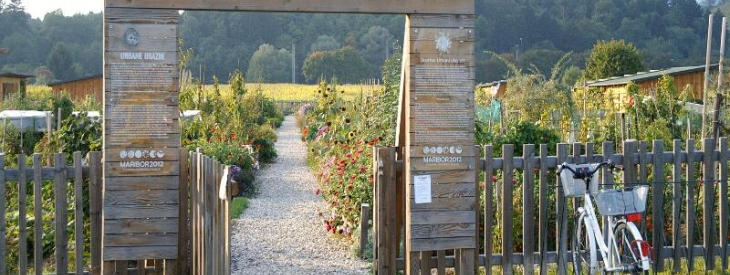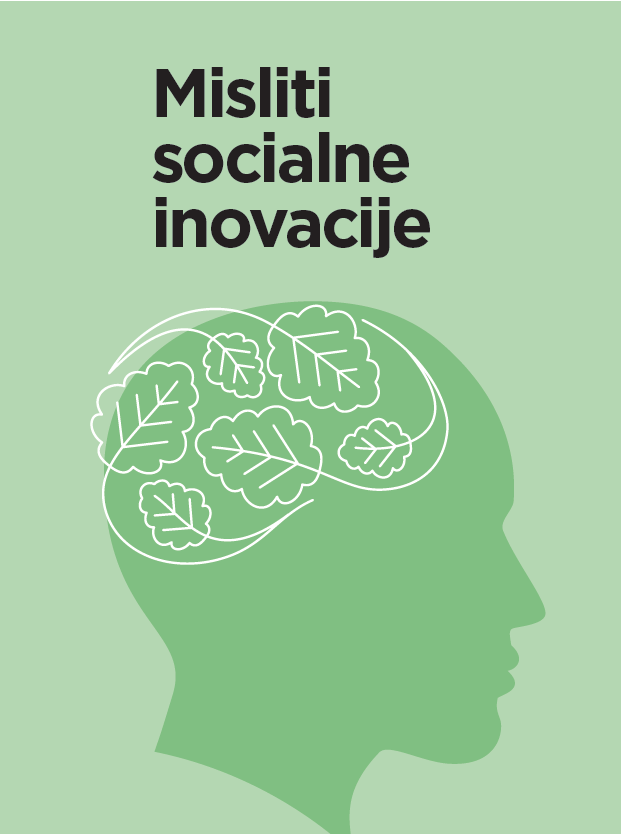DEVELOPING INNOVATION EDUCATION IN THE ICELANDIC CONTEXT
GISLI THORSTEINSSON AND SVANBORG R. JÓNSDÓTTIR, UNIVERSITY OF ICELAND
Innovation education was introduced within compulsory schooling in Iceland in the early 1990s and formed part of the National Curriculum in 1999. Its official name within the curriculum is ‘Innovation and the Practical Use of Knowledge’, but the term ‘Innovation Education’ is more commonly used, or ‘Entrepreneurship/Entrepreneurial Education’ at upper secondary level.
Responding to Educational Needs
Innovation Education (IE)was initiated in response to a lack of creativity and diversity within the Icelandic school system. It was also an attempt to address a call from labour and industry to find and support future inventors and entrepreneurs in order to strengthen our future economy. The school system had been criticised for failing to consider students’ lives outside school and thus not preparing them for active participation within a democratic society. As future citizens, students should be capable of taking part in the formation of a humanistic welfare society.
Initially, IE was introduced in order to encourage elementary school students to participate in the new Young Inventors’ Competition, which was influenced by the Swedish Finnup Competition. However, participating schoolteachers saw additional potential in IE as a cross-curricular subject and realised that the subject could be used as a tool with which to improve general education. In the early years, IE pedagogy was developed within craft lessons in the form of after-school classes and a summer school for young inventors and was supported by The Society of Icelandic Inventors, The Technological University and educational authorities in Reykjavik. IE was influenced by the principles of Nordic Sloyd, in that it aimed to educate children holistically via a carefully structured system (Thorsteinsson and Olafsson, 2009). Within the context of innovation, Sloyd offered a carefully structured system through handicraft and supporting of ideation skills (Thorsteinsson and Denton, 2008).
In 1999, IE was formally developed into a new subject within the Icelandic National Curriculum under the name Innovation and Practical Use of Knowledge. In 2007, it became an optional cross-curricular element of the National Curriculum in relation to creativity, democracy and sustainability.
Benefits and Challenges
In IE, learners identify needs that are important to them and work on solving these. They use their personal social histories and their own life experiences as a foundation for their understanding of the world (Gunnarsdóttir, 2013). In addition, they utilise their knowledge and skills, both acquired and by harnessing their environment, in order to produce new knowledge, either to them personally or even to the world (Gunnarsdóttir, 2013). IE focuses on the conceptual work of students via them searching for needs and problems in their own environment, generating appropriate solutions or applying and developing known solutions (Thorsteinsson & Denton, 2003). It builds on the belief that everyone is creative and the theory of innovation work emphasises that a student utilises their creative powers in order to influence their environment. Innovation work is intended to encourage this aspect of a child’s character and thereby strengthen the stability of future societies (Thorsteinsson, 2012).
Innovation education has been successfully employed as a strategy with which to enhance students´ understanding of technology and science; they research their own environments and invent objects and technologies, rather than merely learning ´about´ technology or science. Each year, students develop several award-winning ideas in IE lessons, with some winning prizes in annual innovation contests. Many useful ideas for solving everyday problems and challenges arise from such lessons. One example of this is an idea presented by two young girls in Gnúpverjaskóli in South-Iceland, who found a solution to the problem of the difficulty of students holding up their hand for a long time while waiting for help from the teacher. They designed a simple artefact hey called Hand-e (Figure 1), which can be taken apart and kept in a school bag. When a student requires the help of their teacher, they assemble the Hand-e on their desk and take it down once the teacher has helped them.

A selection of ideas sent to the yearly Young Inventors’ Competition (YIC) shows a variety of approaches in making life easier, more fun or assisting people out with their work or lives. Such ideas demonstrate that children can take responsibility and respond to challenges in a constructive way, via their work in IE. The following are a few examples highlighting the versatility of ideas presented and a growing sense of responsibility: a phone app that shows whether a food product is healthy, a gadget to collect plastic materials from the ocean, a table game that helps children learn to read, an app to organise and document family time, a gadget to collect excess condensation in houses and a reusable bottle for soda drinks when purchasing such drinks in shops (ideas taken from the YIC 2018).
The pedagogy of IE has been described as emancipatory pedagogy (Jónsdóttir, 2011; Jónsdóttir & Gunnarsdóttir, 2017), where the learner has significant freedom and the teacher is often in the role of supporter rather than specialist. IE requires the mindset of a social constructivist educator (Gunnarsdóttir, 2013) and some teachers are afraid of losing control of content coverage and classroom management, often referred to as chaos angst (Jónsdóttir, 2011, Jónsdóttir & Gunnarsdóttir, 2017). IE requires a willingness to be flexible and accept a level of unpredictability without losing structure and stability and these are tensions teachers must come to terms with, which can be challenging for them (Jónsdóttir & Gunnarsdóttir, 2017).
Similarity to Other Approaches
Icelandic Innovation Education was established due to a call from educators and labour and industry. Subsequently, during the curriculum development period, teaching methods were formulated by elementary school teachers and were based on their experience of teaching IE firstly as after-school courses and later as cross-curricular activities within conventional classes. The development was supported by experienced Icelandic inventors, technicians and designers who understood the value of developing a pedagogical model in support of general education in order to develop creativity and entrepreneurial spirit in students.
In their research projects on IE, Gunnarsdóttir (2001) and Thorsteinsson (2012) examined how students learned in IE classes via social activities during ideation. Both similarly concluded that the IE paradigm is related to social constructivism (Edwards, 2001) and this was supported by the work of Dewey, Piaget and Vygotsky (Thorsteinsson and Denton, 2008). The hypothesis was based upon the theory that new knowledge is an active product of the learner integrating prior knowledge with new information and perceptions. Social constructivists study how people use social activities to change their conditions of existence and their self-image (Shotter, 1993) and subsequently become active participants in the culture that surrounds them, both inside and outside of school (Edwards, 2001).
Based on the work of Gunnarsdóttir (2001) and his description of the innovation process used within IE, Thorsteinsson (2012) put forward an initial model for IE (Thorsteinsson & Denton, 2003), as below.

The model illustrates the way students work through the innovation process in IE classes and is based on a series of steps, relationships and iterations. Students employ ideational skills at all stages and learn via the innovation process within the overall IE pedagogical framework (The Ministry of Education, 1999; 2007), which is managed by the teacher (Thorsteinsson and Denton, 2003). The stages of the innovation process are as follows:
1. Identifying needs.
2. Brainstorming.
3. Creating and choosing initial solutions.
4. Concept drawing or modelling, in order to develop the technical solution.
5. Creating a description of the solution, in addition to the drawing.
6. Presentation.
Students work through the IE innovation process iteratively, with the overlying direction being ‘finding needs’ to ‘presentation of solutions’. Innovation relates to the usefulness of ideas and/or how they can be implemented as solutions to the many problems encountered in daily life. IE students use appropriate knowledge and information from different sources in order to find solutions to identified problems or opportunities, which mirrors Vygotsky’s (1978) Zone of Proximal Development. When students participate in the innovation process, gaps in their knowledge become apparent. They subsequently find it essential to examine and gain new knowledge, in terms of completing a specific innovation process: this process is paramount as subject knowledge consequently develops. As students gain helpful experiences and knowledge via their ideation work, they can employ this in new contexts, using different sources, in order to find solutions to the problems or identified opportunities (Gunnarsdóttir, 2013).
Public Response: Innovation Sustainability Prospects
Although IE has been a part of the compulsory curriculum in Iceland since 1999, it is not yet generally accepted as a school subject in its own right (Jónsdóttir & Gunnarsdóttir, 2017). In some ways, this is understandable as it can be defined and viewed in different forms. It may be seen as a method or an approach, a methodology, an area of learning or a specific subject. In terms of entrepreneurship education in Iceland, IE has been identified as an important aspect of this and is often referred to as innovation and entrepreneurial education, in which the emphasis is more on creativity in the early years and moves towards enterprise or action as students grow older (see Figure 3) (Jónsdóttir & Macdonald, 2013). The general viewpoint is that IE is a positive addition to school work but is not a necessity for the next generation. This is an area that requires research in order to confirm or deny this conclusion.

From 2011-2014, new curricula for compulsory schooling in Iceland were introduced. These did not outline IE as a subject, but elements and approaches of IE are apparent in the curricula of various subjects; e.g., design and crafts and information technology. Elements of IE are strongest within the science curriculum, with direct links to the innovation process and IE. The new general curriculum emphasises integrative and holistic thinking, as it mandates six important issues (pillars) to be addressed by all schools. These are illiteracy, sustainability, democracy, equality, health and well-being and creativity (Ministry of Education, Science and Culture, 2011; p. 25). Such issues, integrative thinking and organisation are very much the ethos of IE.
The annual Young Inventors’ Competition (YIC) has taken place in Iceland since 1992 and has in many ways been the face of IE, commanding attention and interest in the subject. The YIC is open to elementary school students and has encouraged schools to employ IE in a variety of ways. The competition is supported by the Ministry of Education, the Welfare Ministry and the Prime Ministry, along with the University of Iceland, the University of Reykjavik and the Icelandic Innovation Centre. The President of Iceland is ambassador of the competition and awards prizes for excellent designs and inventions. Prior to the prize-giving ceremony, there is a two-day workshop for participating students, supported by adults, teachers or businesses in helping them to prepare their idea for exhibition during the award ceremony. The media has described the competition as an important national event encouraging both entrepreneurship and innovation in young people.
IE is still a peripheral subject in the Icelandic school system but changes towards a modern education in the 21st century seem to support the kind of education inherent in innovation education. Therefore, the authors call for a policy from the educational authorities in Iceland where a continuity and progression in Innovation Education is secured.
References
Edwards, A. (2001). Researching pedagogy: a sociocultural agenda. Pedagogy, Culture and Society, 9(2), (pp. 161–186).
Gunnarsdóttir, R. (2001). Innovation Education: Defining the Phenomenon. Unpublished doctoral thesis. Leeds: University of Leeds.
Gunnarsdóttir, R. (2013). Innovation education: Defining the phenomenon. In L. Shavininia (Ed.), The Routledge international handbook of innovation education (pp. 17-28). London: Routledge.
Jónsdóttir, S. R., & Gunnarsdóttir, R. (2017). The road to independence: Emancipatory pedagogy. Rotterdam: Sense.
Jónsdóttir, S. R., & Macdonald, A. (2013). Settings and pedagogy in innovation education. In L. V. Shavinina (Ed.), The Routledge international handbook of innovation education (pp. 273-287). London: Routledge.
Jónsdóttir, S. R. (2011). The location of innovation education in Icelandic compulsory schools. University of Iceland, Reykjavík.
Shotter, J. (1993). Cultural Politics of Everyday Life. Buckingham: Open University Press.
The Icelandic Ministry of Education. (2011). The Icelandic National Curriculum.
The Icelandic Ministry of Education. (1999). The Icelandic National Curriculum.
The Icelandic Ministry of Education. (2007). The Icelandic National Curriculum.
Thorsteinsson, G. & Denton, H. (2003).The Development of Innovation Education in Iceland: a Pathway to Modern Pedagogy and Potential Value in the UK”. The Data Journal, 8(3), (pp. 172-179). ISSN 1360-1431.
Thorsteinsson, G., Denton, H. G. (2008). Developing an understanding of the pedagogy of using a Virtual Reality Learning Environment (VRLE) to support Innovation Education (IE) in Iceland: a literature survey. Design and Technology Education: An International Journal, 13( 2), (pp. 15–26).
Thorsteinsson, G., and Olafsson, B. (2009). Design and Craft Education in Iceland, Pedagogical Background and Development: A literature review. Design and Technology Education: An International Journal, 14(2), (pp. 10-24). ISBN 1360-1431.
Thorsteinsson, G. Innovation Education to Improve Social Responsibility through General Education.Tiltai, Bridges-Brucken, 4(61), (pp. 71-78). Klaipeda: Klaipeda University.
Vygotsky, L. S. (1978). Mind in Society: The Development of Higher Psychological Processes. Cambridge, MA: Harvard University Press.
FAMILY ZONE
Morda vam bo všeč tudi

O DEKONTRAMINACIJI, ALI KAKO IZ »LEZBIJKE NA KOLE« NASTANE »PRED LEZBIJKE NA KOLENA«
17/01/2019
SKUPNOSTNI URBANI EKOVRT V BOROVI VASI V MARIBORU
14/01/2019
